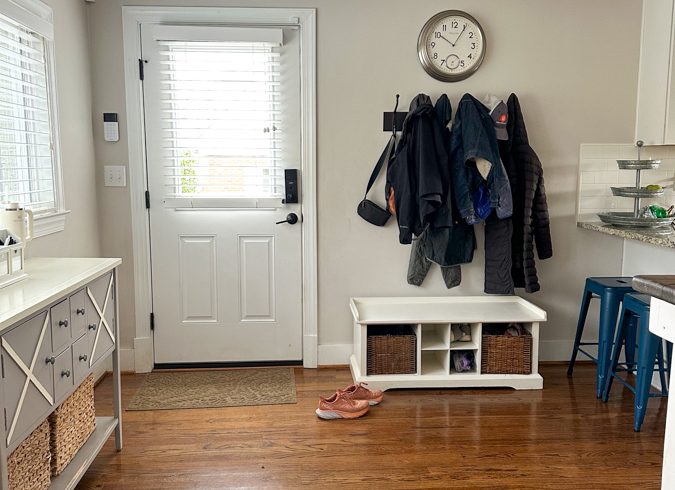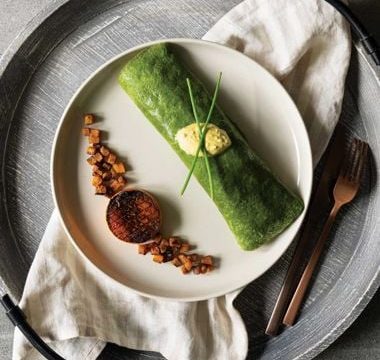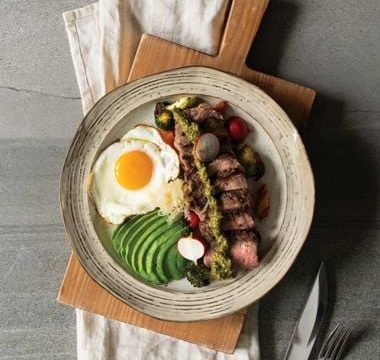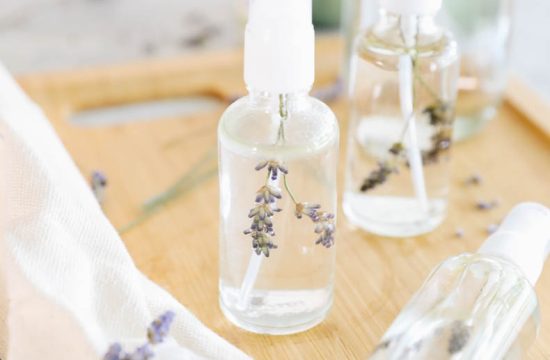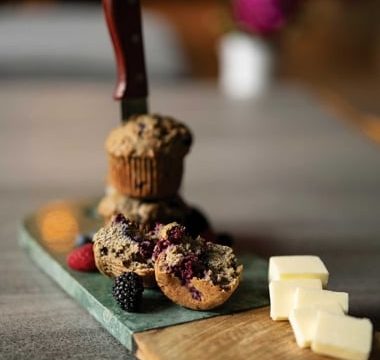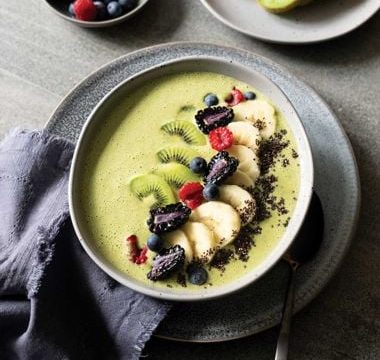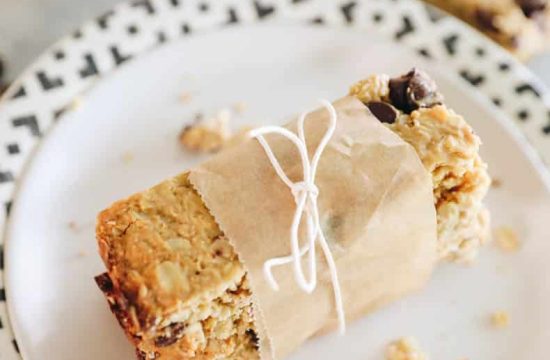If you’re looking for small mudroom ideas, this post has some examples and tips from our own mudroom organization.
.tasty-pins-banner-container{display:block;margin-bottom:20px;position:relative;width:-moz-fit-content;width:fit-content}.tasty-pins-banner-container a{cursor:pointer;display:flex;font-size:14px;font-weight:700;letter-spacing:1px;line-height:1.8em;text-transform:uppercase}.tasty-pins-banner-container a:hover{opacity:1}.tasty-pins-banner-container .tasty-pins-banner{align-items:center;bottom:0;cursor:pointer;display:flex;justify-content:center;left:0;padding-bottom:1em;padding-top:1em;position:absolute;right:0}.tasty-pins-banner-container .tasty-pins-banner svg{margin-right:4px;width:32px}.tasty-pins-banner-container .tasty-pins-banner span{margin-top:4px}.tasty-pins-banner-container a.tasty-pins-banner{text-decoration:none}.tasty-pins-banner-container a.tasty-pins-banner:hover{opacity:.8}.tasty-pins-banner-container a.tasty-pins-banner-image-link{flex-direction:column}.tasty-pins-banner-container a img{margin-bottom:0}.entry-content .wp-block-image .tasty-pins-banner-container img{margin-bottom:0;padding-bottom:0}#et-boc .et-l div .et_pb_image_wrap .tasty-pins-banner-container .tasty-pins-banner{padding-bottom:1em!important;padding-top:1em;text-decoration:none}#et-boc .et-l div .et_pb_image_wrap .tasty-pins-banner-container a.tasty-pins-banner{cursor:pointer;display:flex;font-size:14px;font-weight:700;line-height:1.8em;text-transform:uppercase}#et-boc .et-l div .et_pb_image_wrap .tasty-pins-banner-container a.tasty-pins-banner span{letter-spacing:2px;margin-top:4px}.et-db #et-boc .et-l .et_pb_module .tasty-pins-banner-container a:not(.wc-forward){padding-bottom:0}
Our mudroom isn’t tiny but it isn’t huge either. And for years, we didn’t really have one at all. Many people use a corner of their living room or entryway to serve as a mudroom. I think we can all agree that walking into a nook full of shoes on the floor is not ideal.
Getting a little creative with storage will help you maximize a small mudroom to make it functional and visually pleasing for your fam. Here is a round-up of ideas to inspire you to carve out a dedicated space for a small mudroom whether you have the ability to do something semi-custom or piece-meal storage together in a nook of your house.
Our Mudroom
When we renovated our house, a mudroom space was a high priority. We had to work with the existing floor plan, so we knew we couldn’t do anything extravagant, but we did add a little square footage. (One version of our plans had a laundry room up here and we realized that would be WAY too much for the side entry).
Our mudroom priorities:
- 4 lockers with coat/bag hooks, one for each family member
- Space for shoes for each person
- Closed cabinet space for each person
- A utility closet to store the cordless vacuum, grocery bags, and other household items
- Reuse the same entry table that has served us well for almost a decade
Mudroom Before:
We had a nook under the clock for bags and a wooden bench for shoes. Extra shoes were stored in the bottom baskets of the gray cabinet to the left:
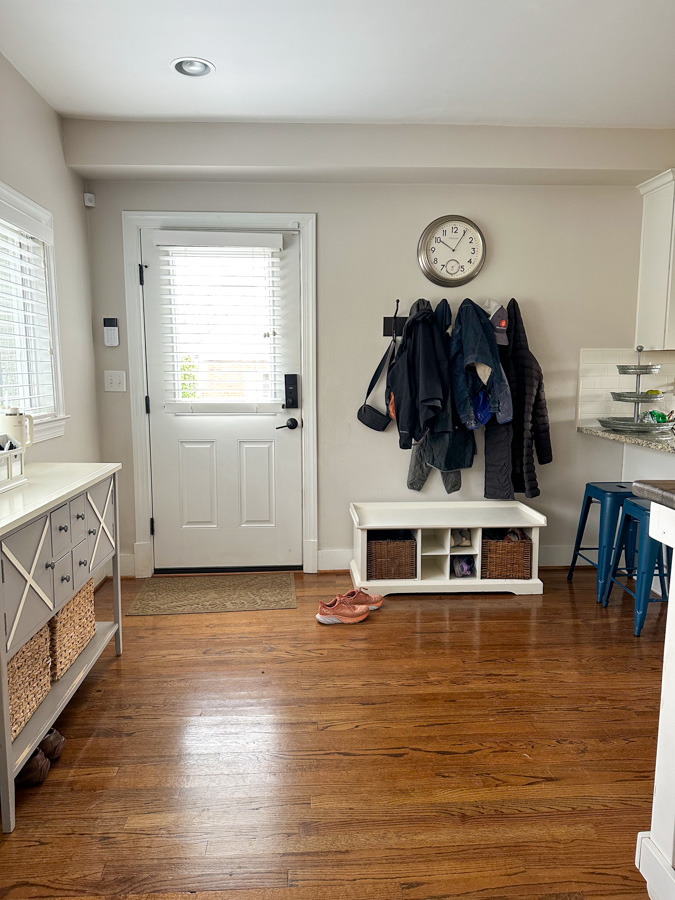
Mudroom After:
We had custom cabinets built to fit the space (a true luxury, I know!) and a closet built on the opposite wall (where the kitchen used to be) for all the common household things. All the paint is Benjamin Moore Simply White to match all the paint colors in our home.
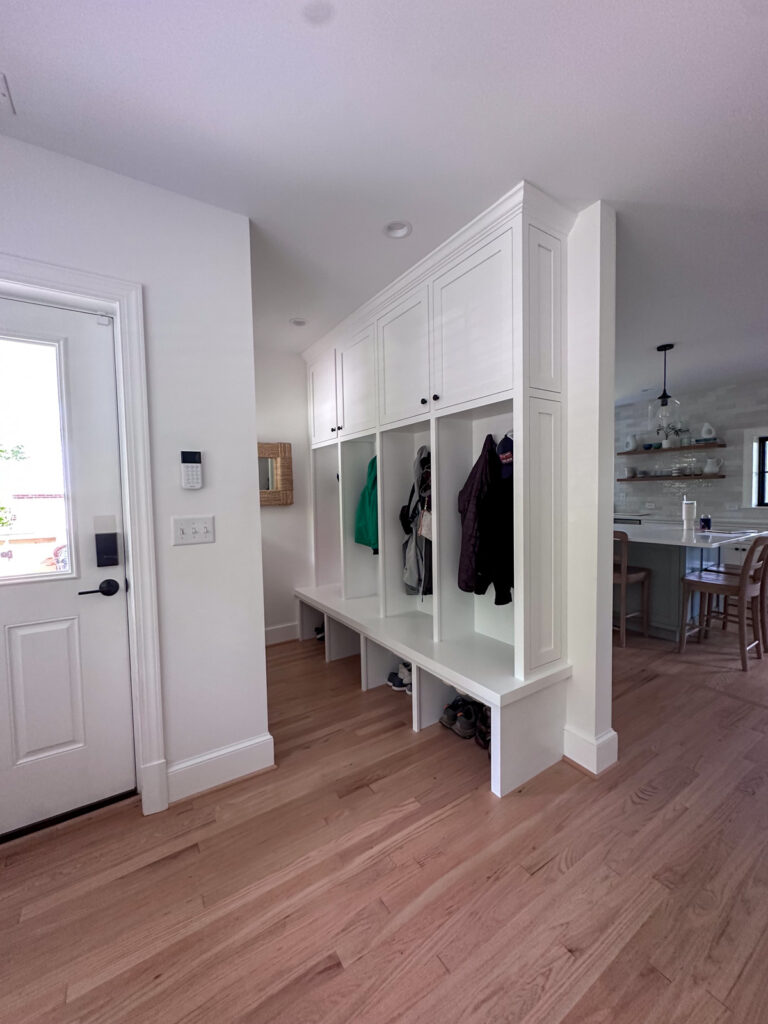
To see more before and after pics, check out this post: Home Renovation Before + After.
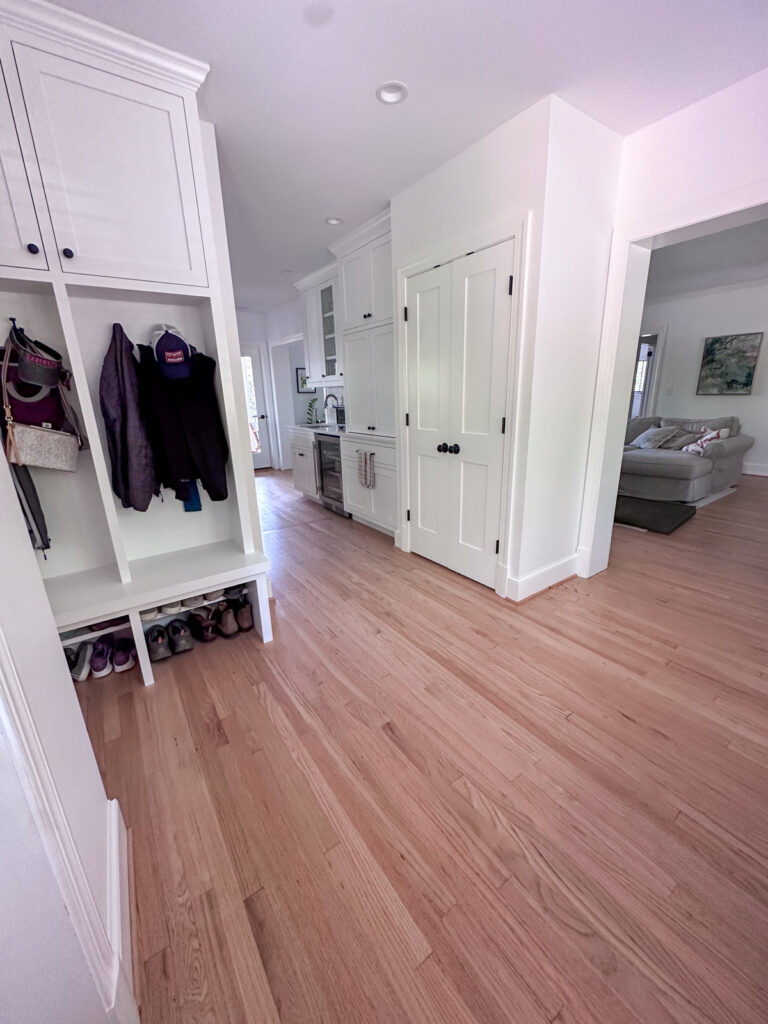
Read on to see more photos of how we’ve accessorized our mudroom and where everything has a place!
Small Mudroom Ideas
What is a mudroom?
Hopefully, there isn’t too much mud in yours! The name “mudroom” originates from its historical use as a place to remove muddy boots and outerwear before entering the main living areas of a home. Often they have an easy-to-clean / waterproof tile floor. A modern mudroom is a transitional space in a house, typically located near the entryway, designed to manage and contain messes that come in with people and pets. You might use mudroom storage for shoes, coats, backpacks, purses, umbrellas, and other outdoor gear that you need to grab on your way in or out of the home.
How To Create A Mudroom In A Small Space
Create a Freestanding Mudroom
Any section of your living room or entryway can become a mudroom if you define the space with some furniture and storage that fits the function. A hidden spot for shoes and hooks for coats and purses serve the most simple needs. If you are lucky to have a coat closet, then you can focus on using the mudroom space for all the other things that come in: leashes, hats, purses, phone/keys, etc.
Maximize Vertical Storage
Utilize wall space with hooks, shelves, or hanging organizers to keep items off the floor and create more room for movement. Floating shelves are also great for things like keys and hats.
Use Multi-functional Furniture
Choose furniture pieces like benches or ottomans with built-in storage compartments to store shoes, umbrellas, or pet supplies, doubling as seating when needed. I love furniture with lots of smaller drawers and having baskets underneath.
Utilize Narrow Spaces
Even narrow areas can be transformed into functional mudrooms with slim storage solutions such as tall, narrow cabinets or shelving units. You probably all know the famous slim IKEA shoe cabinet! I am always a huge fan of rows of hooks. I love these hooks we have from Pottery Barn! Pegboards and over-the-door organizers can also be great for using open surface area on the wall.
Clear Clutter Regularly
Regularly declutter the storage space by removing items that are not frequently used or seasonal. You might also swap things in and out of season. In the winter, I have more coats and in the summer I have more hats!
15 Mudroom Ideas For Small Spaces
1. Open Lockers
We went back and forth over whether or not to enclose the shoes AND the coat area. Ultimately I was talked into having them be open rather than pull out drawers or cabinets on the lockers. The biggest decision was that we didn’t have a ton of space to move around and our lockers are off to the side enough that the visual was a little hidden.
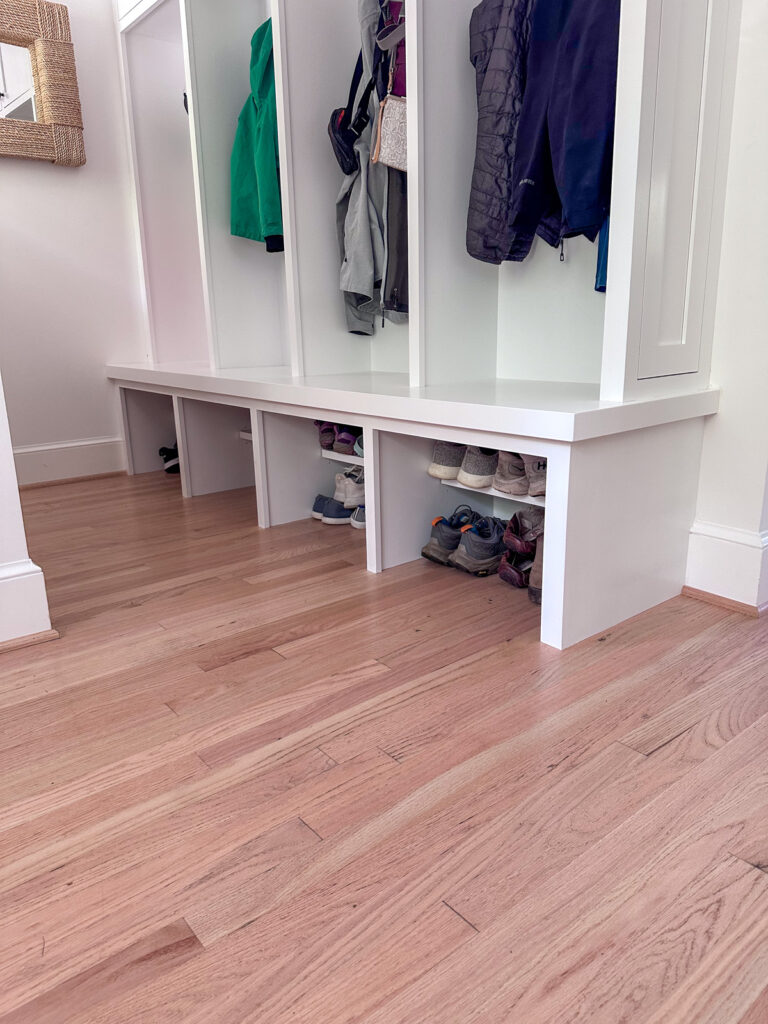
2. Open Shoe Cubbies
The shoe cubbies are also open. Thomas felt strongly that if we had to add a “pull out a drawer or basket” step the shoes would just end up all over the floor. He was right because they do end up all over the floor, but luckily each person has a little front porch where they can put their shoes. The hidden shelf for “second tier” shoes is a must! And the shelf is notched back so that taller shoes will still be able to be tucked. I am ultimately happy with our decision to keep the shoe cubbies open because they have maximum function and minimal visual clutter.
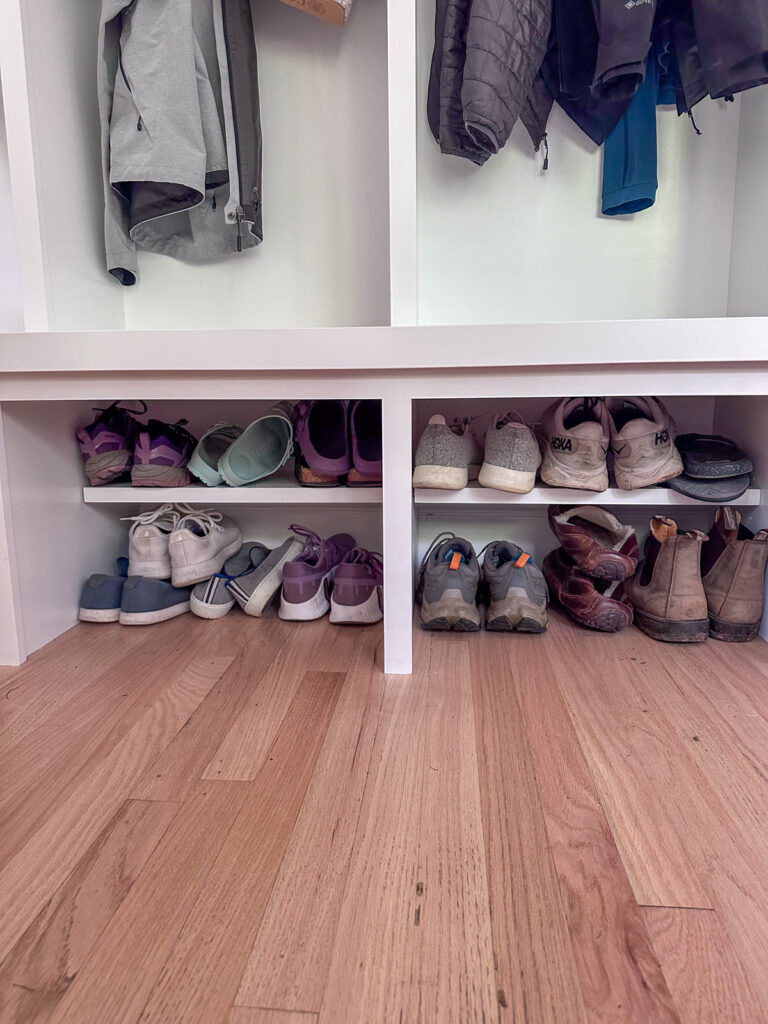
3. Use Clear Acrylic Bins to Sort Items
Obviously, I recommend these bins in all areas of the home! They are great to be able to see what’s inside and lightweight enough to easily bring down from a height to get what’s inside. Plus they are fabulous for sorting gloves, hats, and other small items you might keep in the mudroom. Each of our family cubbies has 1-3 of them.
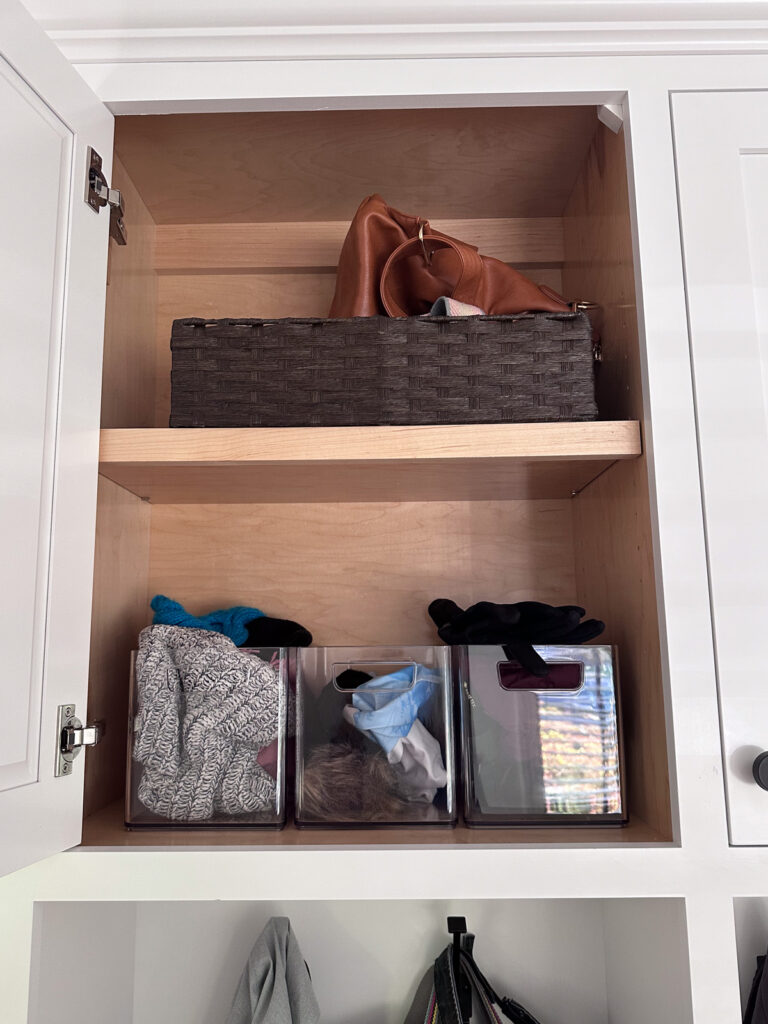
4. Maximize Height
Our cubbies have cabinets on top with adjustable shelves to totally maximize the height. While I do have to stand on the bench to reach, and the boys can’t really reach there, the upper shelf is a great spot for things that don’t get used everyday. Extra hats, helmets, or off season sports equipment. We also use the closed storage for their sports bags or pool toys when in season.
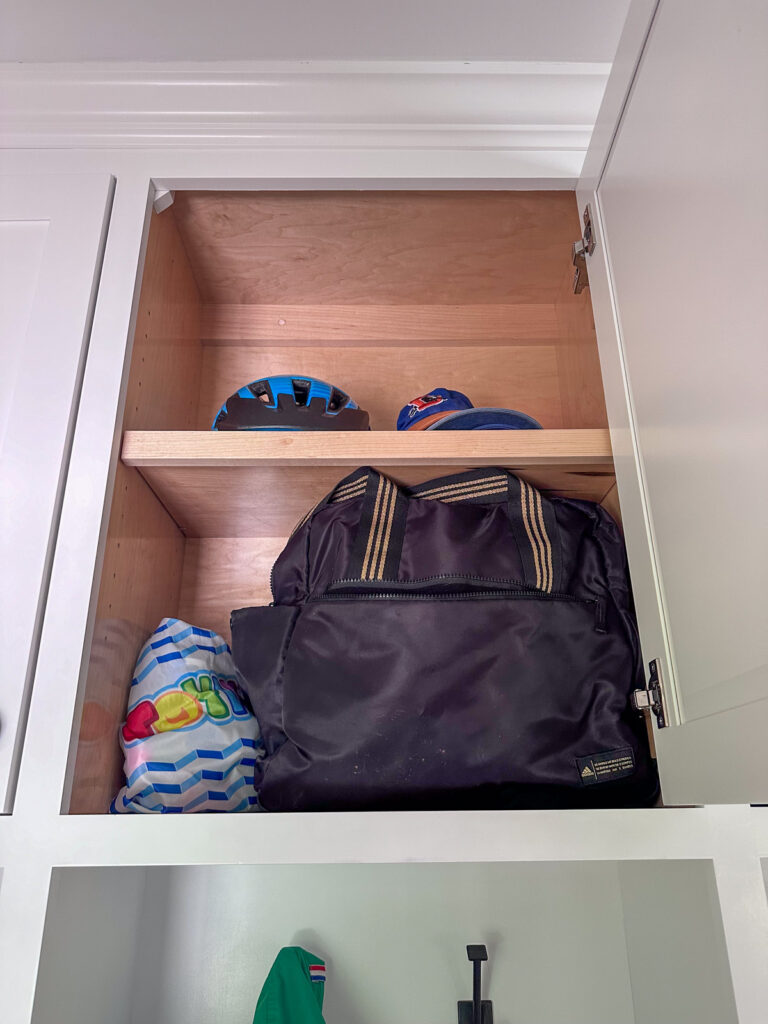
5. Add A Mirror
A mirror acts as both a way to open up a small space, or in our case the back of the room, and also a quick place to check hair and makeup when you’re heading out the door!
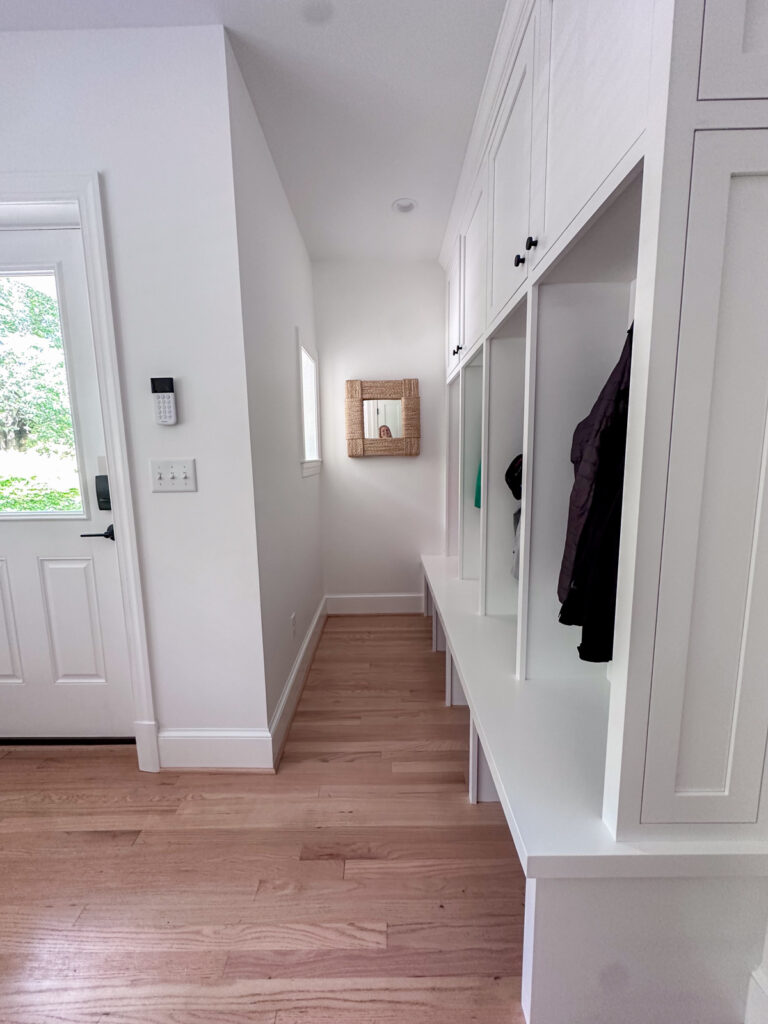
6. Add Light
While “add a window” might not be a practical tip for most people, when we designed our mudroom it was a big point for me for it not to be too dark, and the placement of this window is great to both see out and let light in. BUT, if you don’t have the luxury of an architect to work with, you can add lamps on a shelf or your storage furniture to brighten up what might otherwise be a dingy space.
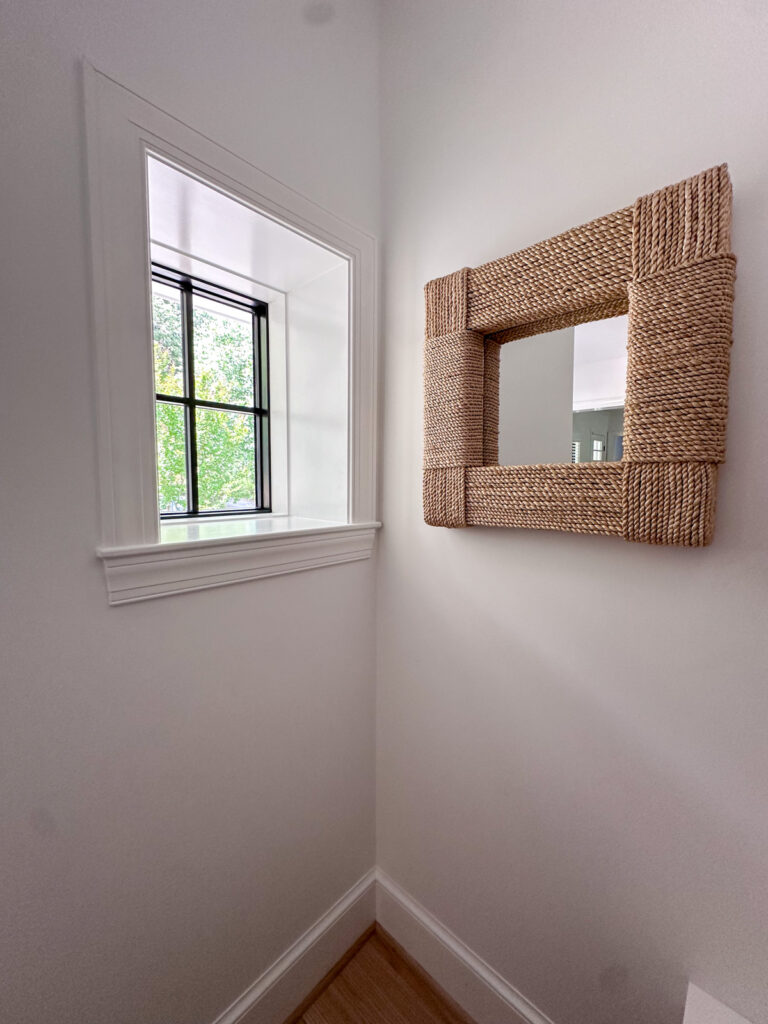
7. Consider A Potted Plant or Artwork
Interior designers will always tell you a plant makes a space feel like a home. In an area that is otherwise more function than design, add a plant or artwork to make your mudroom feel a little more put together.
8. Add Multi-Functional Furniture
I bought this piece online years ago and it works so well for the entryway! It’s slim so it doesn’t stick out far, and the drawers and cabinets are great for sorting. Thomas and I each have a mini drawer; one has tools and one is for dog things. The cabinets are both used for Gus. Baskets underneath have towels for cleaning up muddy paws or wet floors on rainy days.
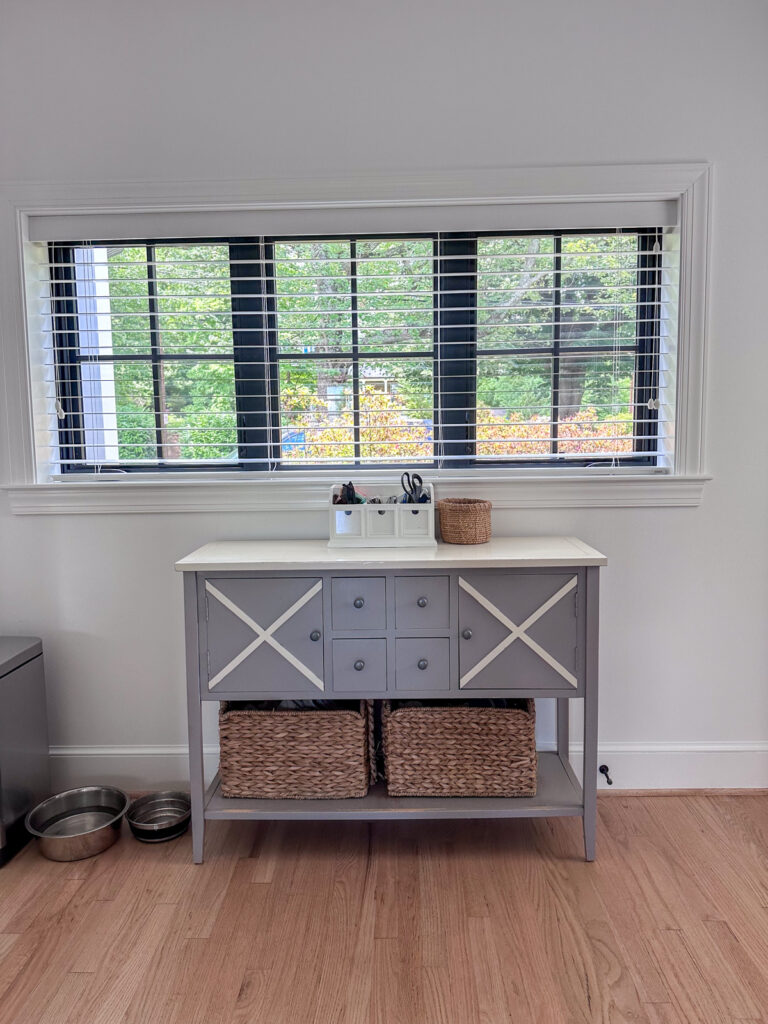
9. Drawer Dividers Add Even More
My drawer has some more clear acrylic dividers to sort lip gloss from gum! (Thomas’s drawer is much less organized – haha).
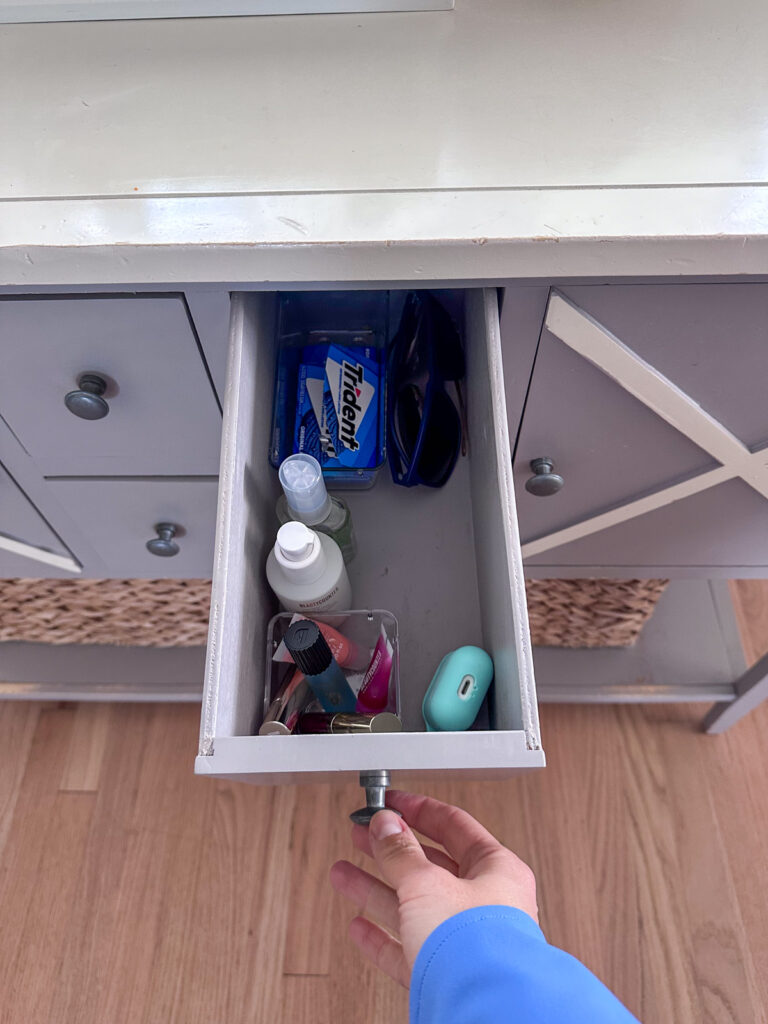
10. Custom Shelf Grid & Outlets
We were also lucky to be able to design the shelves so that our cordless vacuum can have its own nook perfect for its height. We also had outlets placed for both of our vacuums so they could charge right where they need to be resting. This isn’t quite as hard as it seems – an electrician can usually add an outlet for you for not too much money.
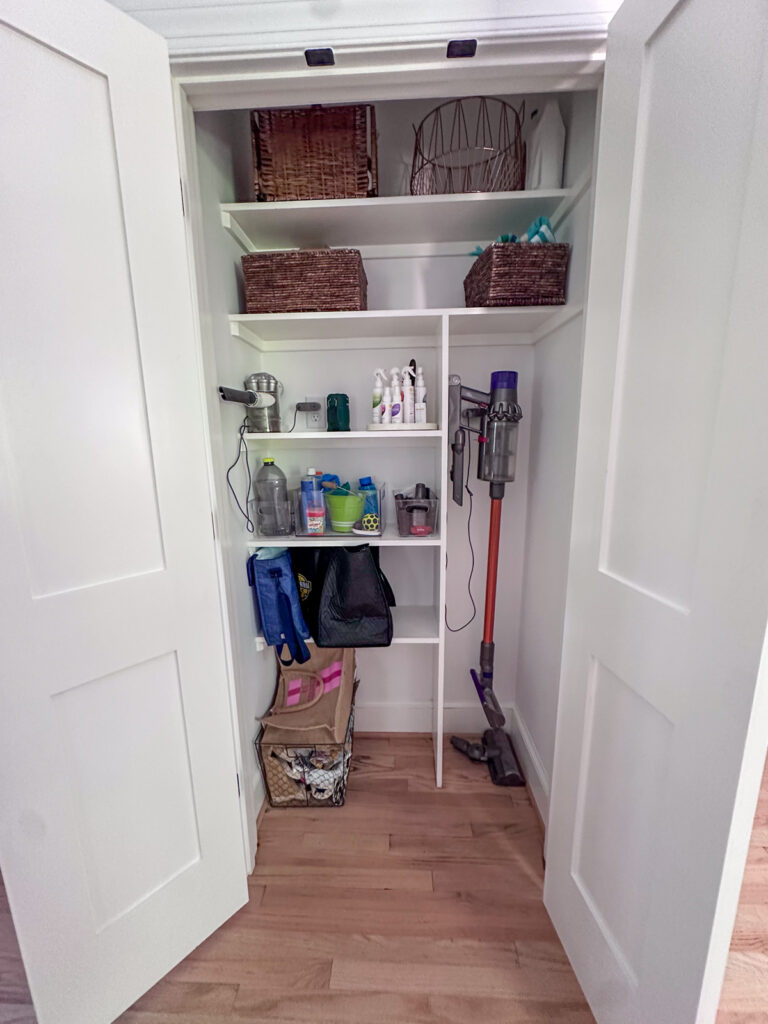

11. Use Baskets and Bins In A Closet
Moving over to our utility closet, you can see that I have plenty of baskets to store things from extra dog supplies to our reusable bags to a picnic blanket.
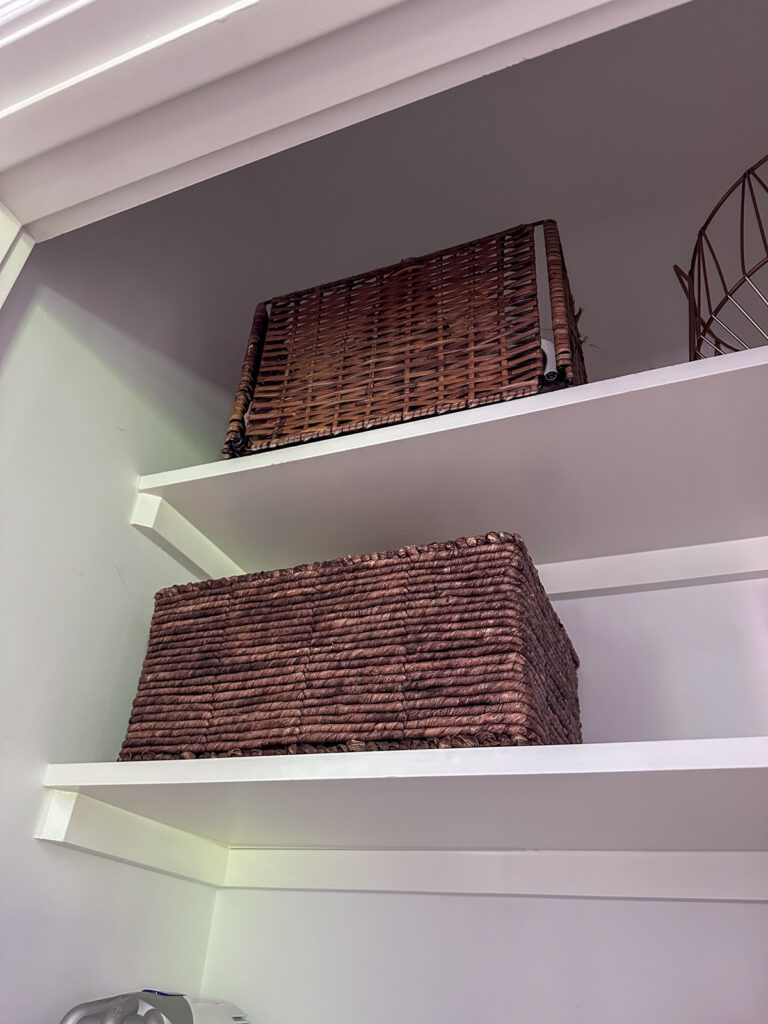
12. More Acrylic Bins FTW
I use them everywhere! These house kid/yard toys and vacuum accessories.
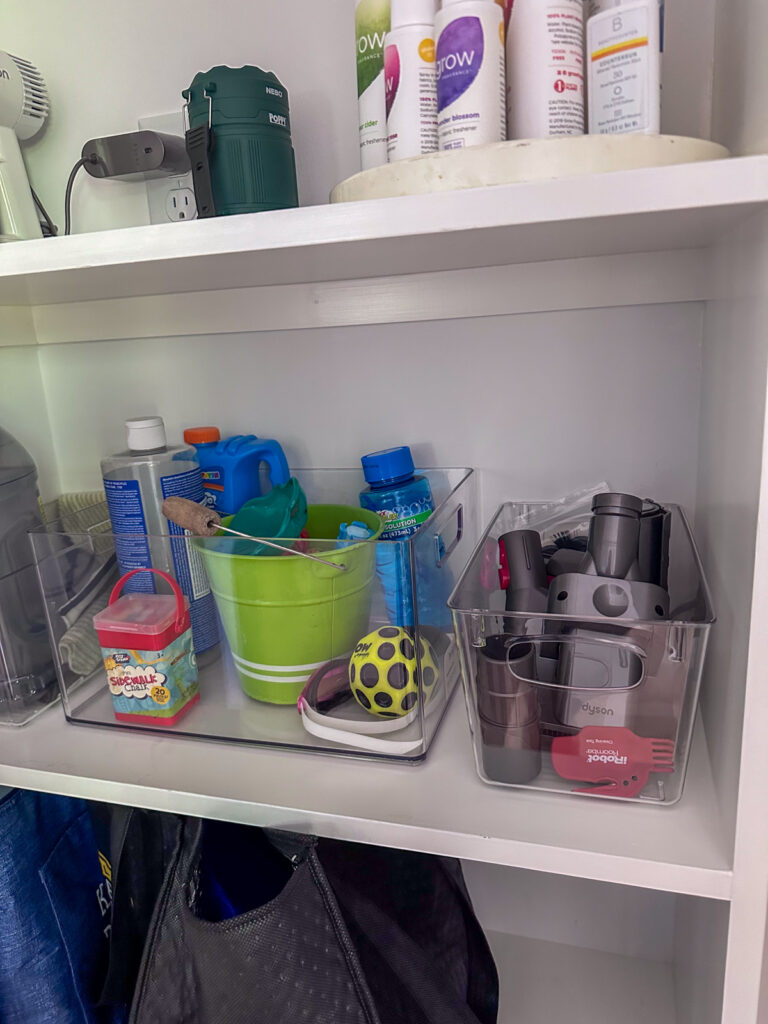
13. Turntables Organize Sprays & Sunscreen
You never know when you need room spray, bug spray or sunscreen! This turntable, typically found in a pantry, contains them all!
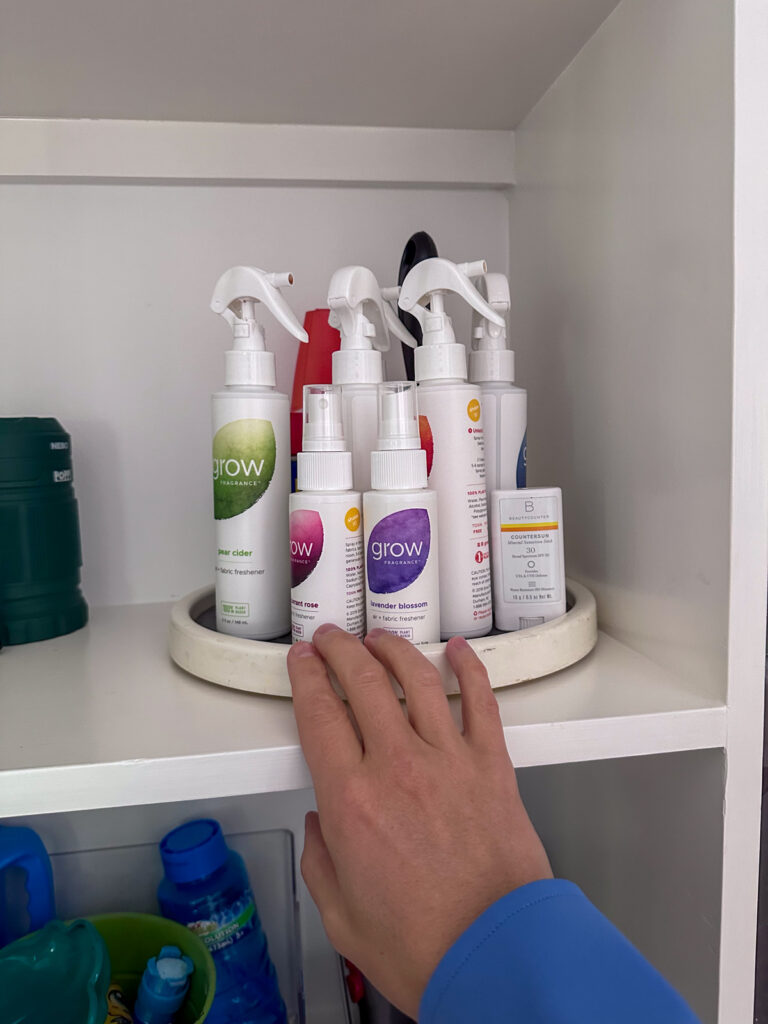
14. Household Info
Lastly, I have a printout for guests and babysitters that has all of our household info: address, important phone numbers, the doctor’s office, and our wifi info. This is always easy to show anyone new to the house!
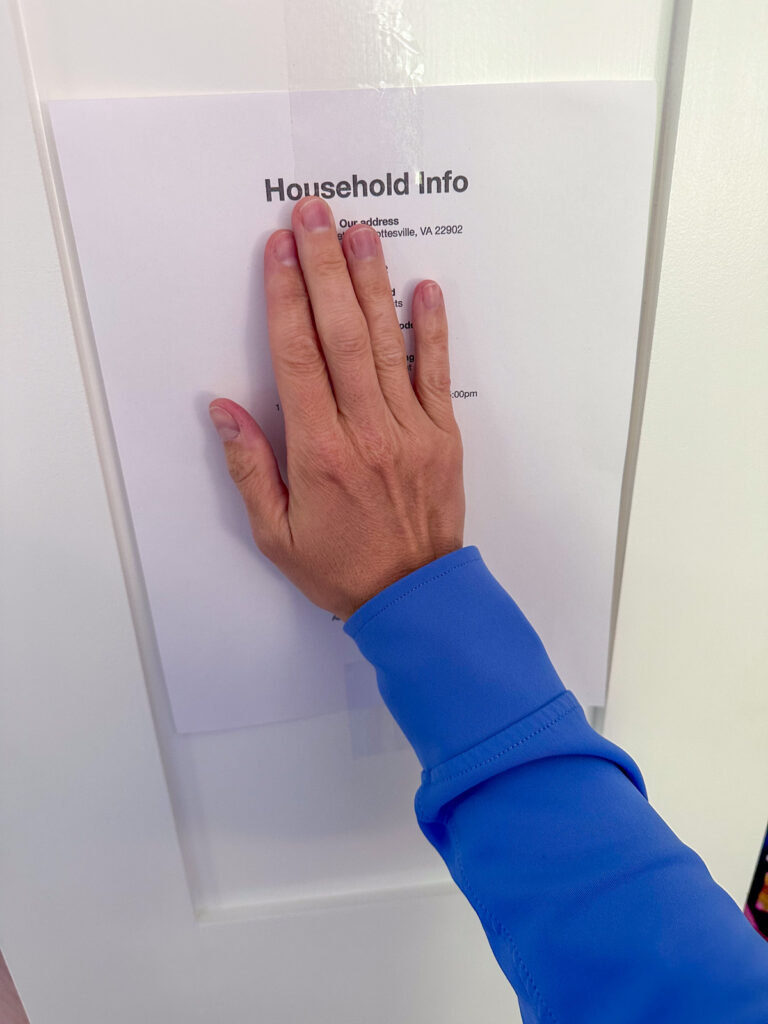
15. Labels & Dividers
If you aren’t using mostly clear bins, use labels and dividers to organize items within baskets, bins, or cubbies, making it easier to find what you need and maintain an organized space!

